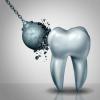
Breaking News
 Tucker shares 'backroom' info about brawl between him and Israel First crowd…
Tucker shares 'backroom' info about brawl between him and Israel First crowd…
 Why Isn't There a Cure for Alzheimer's Disease?
Why Isn't There a Cure for Alzheimer's Disease?
 US Government Revokes 80,000 Visas
US Government Revokes 80,000 Visas
 OpenAI CEO Sam Altman served legal papers during speech in dramatic on-stage ambush
OpenAI CEO Sam Altman served legal papers during speech in dramatic on-stage ambush
Top Tech News
 Goodbye, Cavities? Scientists Just Found a Way to Regrow Tooth Enamel
Goodbye, Cavities? Scientists Just Found a Way to Regrow Tooth Enamel
 Scientists Say They've Figured Out How to Transcribe Your Thoughts From an MRI Scan
Scientists Say They've Figured Out How to Transcribe Your Thoughts From an MRI Scan
 SanDisk stuffed 1 TB of storage into the smallest Type-C thumb drive ever
SanDisk stuffed 1 TB of storage into the smallest Type-C thumb drive ever
 Calling Dr. Grok. Can AI Do Better than Your Primary Physician?
Calling Dr. Grok. Can AI Do Better than Your Primary Physician?
 HUGE 32kWh LiFePO4 DIY Battery w/ 628Ah Cells! 90 Minute Build
HUGE 32kWh LiFePO4 DIY Battery w/ 628Ah Cells! 90 Minute Build
 What Has Bitcoin Become 17 Years After Satoshi Nakamoto Published The Whitepaper?
What Has Bitcoin Become 17 Years After Satoshi Nakamoto Published The Whitepaper?
 Japan just injected artificial blood into a human. No blood type needed. No refrigeration.
Japan just injected artificial blood into a human. No blood type needed. No refrigeration.
 The 6 Best LLM Tools To Run Models Locally
The 6 Best LLM Tools To Run Models Locally
 Testing My First Sodium-Ion Solar Battery
Testing My First Sodium-Ion Solar Battery
 A man once paralyzed from the waist down now stands on his own, not with machines or wires,...
A man once paralyzed from the waist down now stands on his own, not with machines or wires,...
Rolls Royce has 450 MW modular nuclear reactor design

Still without a publicized name, Rolls-Royce's design is a pressurized water reactor in a close-coupled four-loop configuration. A team of about 150 people have been working on it for around two years. The first months were taken with major design decisions including the use of a light-water as coolant and moderator and to select the close-coupled arrangement of steam generators as opposed to integrating them into the reactor vessel, or adopting a more spread out design similar to today's large reactors. At 450 MWe the output is higher than other innovative designs, and actually outside the usual range considered to define the SMR market of up to 300 MWe.
They are trying to make a design that is cost competitive with natural gas.
Rolls-Royce believes its SMR design will:
• Provide 450 MW, depending on the configuration, that's the equivalent of up to 160 onshore wind turbines.
• Supply power to the grid in a timely manner at lower cost to the taxpayer and consumer, generating electricity that is at least as cheap (per MW) as power generated by today's large scale reactors – potentially even cheaper when SMRs go into volume production.
• Represent the lowest risk by using proven technology and best value by using a high degree of commercial or standardized off-the-shelf components.



